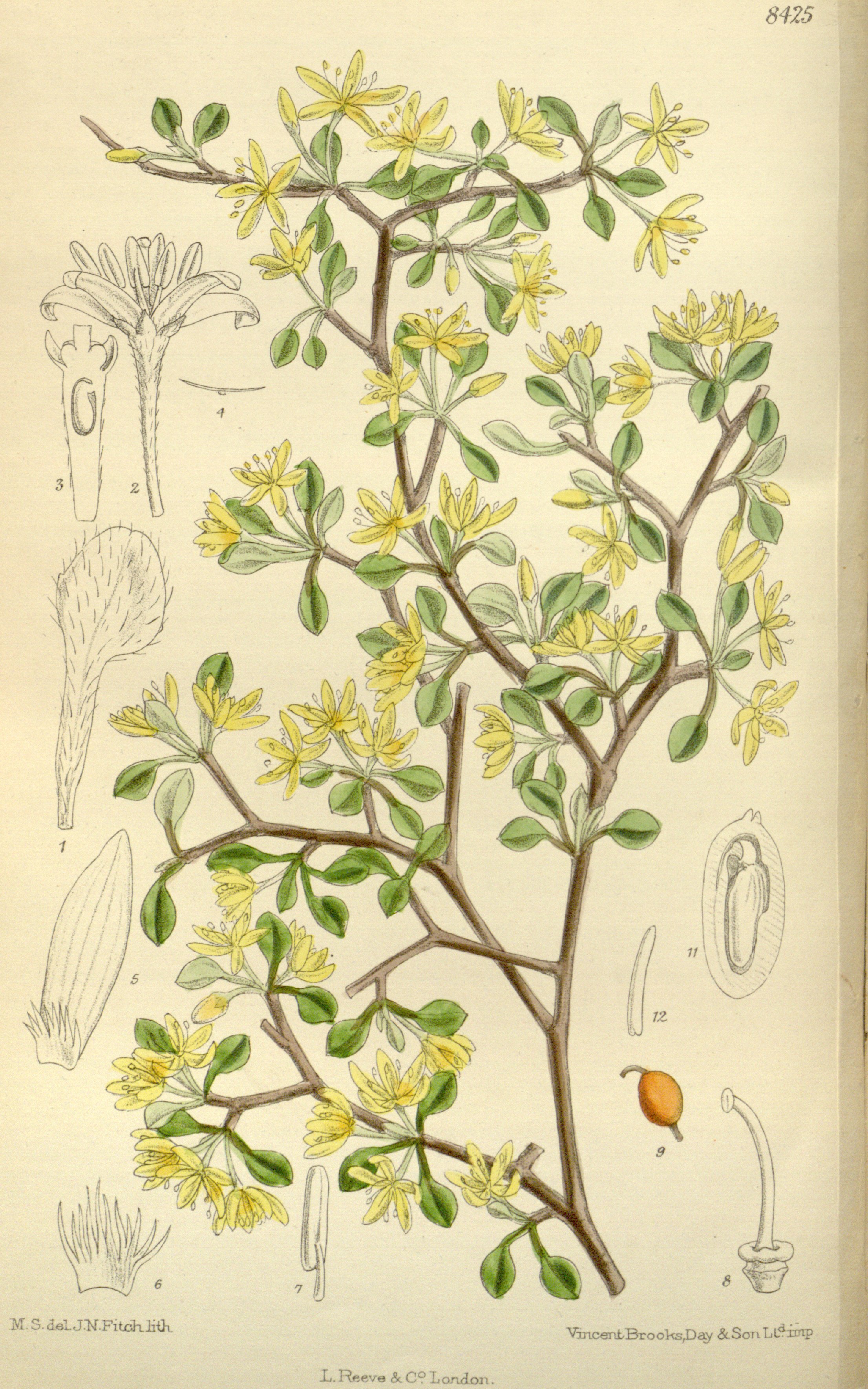Ericodesma Cuneata on:
[Wikipedia]
[Google]
[Amazon]
''Ericodesma cuneata'', the
 The larvae of ''E. cuneata'' feed on '' Corokia cotoneaster'', (korokio). However the moth has not been associated with urban plantings of its host. The adult moth has been collected in
The larvae of ''E. cuneata'' feed on '' Corokia cotoneaster'', (korokio). However the moth has not been associated with urban plantings of its host. The adult moth has been collected in
Corokia
''Corokia'' is a genus in the Argophyllaceae family. The genus was first described in 1839. It comprising six species native to New Zealand, Australia and Rapa Iti. ''Corokia'' species are shrubs or small tree
In botany, a tree is a per ...
leafroller moth, is a species of moth
Moths are a group of insects that includes all members of the order Lepidoptera that are not Butterfly, butterflies. They were previously classified as suborder Heterocera, but the group is Paraphyly, paraphyletic with respect to butterflies (s ...
in the family Tortricidae
The Tortricidae are a family of moths, commonly known as tortrix moths or leafroller moths, in the order Lepidoptera. This large family has over 11,000 species described, and is the sole member of the superfamily Tortricoidea, although the genu ...
. It is endemic
Endemism is the state of a species being found only in a single defined geographic location, such as an island, state, nation, country or other defined zone; organisms that are indigenous to a place are not endemic to it if they are also foun ...
to New Zealand
New Zealand () is an island country in the southwestern Pacific Ocean. It consists of two main landmasses—the North Island () and the South Island ()—and List of islands of New Zealand, over 600 smaller islands. It is the List of isla ...
. This moth is classified as "At Risk, Naturally Uncommon" by the Department of Conservation
Department may refer to:
* Departmentalization, division of a larger organization into parts with specific responsibility
Government and military
*Department (administrative division), a geographical and administrative division within a country, ...
.
Taxonomy
This species was first described by Charles E. Clarke in 1926 using a specimen collected by him at Hope Arm,Lake Manapouri
Lake Manapouri () is located in the South Island of New Zealand. The lake is situated within the Fiordland National Park and the wider region of Te Wahipounamu South West New Zealand World Heritage Area.
Māori History
According to Māori peop ...
and named ''Tortrix cuneata.'' In 1971 John S. Dugdale
John Stewart Dugdale (5 April 1934 – 4 September 2020) was a New Zealand entomologist known for his contributions to knowledge about New Zealand lepidoptera, as well as tachinid flies and cicadas
The cicadas () are a superfamily, the ...
assigned ''Tortrix cuneata'' to the genus ''Ericodesma''. The holotype
A holotype (Latin: ''holotypus'') is a single physical example (or illustration) of an organism used when the species (or lower-ranked taxon) was formally described. It is either the single such physical example (or illustration) or one of s ...
specimen is held at the Auckland War Memorial Museum
The Auckland War Memorial Museum (), also known as Auckland Museum, is one of New Zealand's most important museums and war memorials. Its neoclassical architecture, neoclassical building constructed in the 1920s and 1950s, stands on Observatory ...
.
Description
Clarke described the species as follows:Distribution
This species is endemic to New Zealand. ''E. cuneata'' can be found atTaupō
Taupō (), sometimes written Taupo, is a town located in the central North Island of New Zealand. It is situated on the edge of Lake Taupō, which is the largest freshwater lake in New Zealand. Taupō was constituted as a borough in 1953. It h ...
, Otago Lakes
Otago (, ; ) is a region of New Zealand located in the southern half of the South Island and administered by the Otago Regional Council. It has an area of approximately , making it the country's second largest local government region. Its po ...
and Fiordland
Fiordland (, "The Pit of Tattooing", and also translated as "the Shadowlands"), is a non-administrative geographical region of New Zealand in the south-western corner of the South Island, comprising the western third of Southland. Most of F ...
. The species, although rare, can be found frequently at The Wilderness in Southland.
Biology and behaviour
The larvae of this species web leaves together on the foliated stems of its host plant.Host species and habitat
 The larvae of ''E. cuneata'' feed on '' Corokia cotoneaster'', (korokio). However the moth has not been associated with urban plantings of its host. The adult moth has been collected in
The larvae of ''E. cuneata'' feed on '' Corokia cotoneaster'', (korokio). However the moth has not been associated with urban plantings of its host. The adult moth has been collected in beech
Beech (genus ''Fagus'') is a genus of deciduous trees in the family Fagaceae, native to subtropical (accessory forest element) and temperate (as dominant element of Mesophyte, mesophytic forests) Eurasia and North America. There are 14 accepted ...
forest habitat, as well as at strongly leached terraces and plains commonly called "wilderness".
Conservation status
This species has been classified as having the "At Risk, Naturally Uncommon" conservation status under theNew Zealand Threat Classification System
The New Zealand Threat Classification System is used by the Department of Conservation to assess conservation priorities of species in New Zealand.
The system was developed because the IUCN Red List, a similar conservation status system, had s ...
.
References
{{Taxonbar, from=Q13612491 Moths described in 1926 Archipini Moths of New Zealand Endemic fauna of New Zealand Endangered biota of New Zealand Endemic moths of New Zealand Taxa named by Charles Edwin Clarke